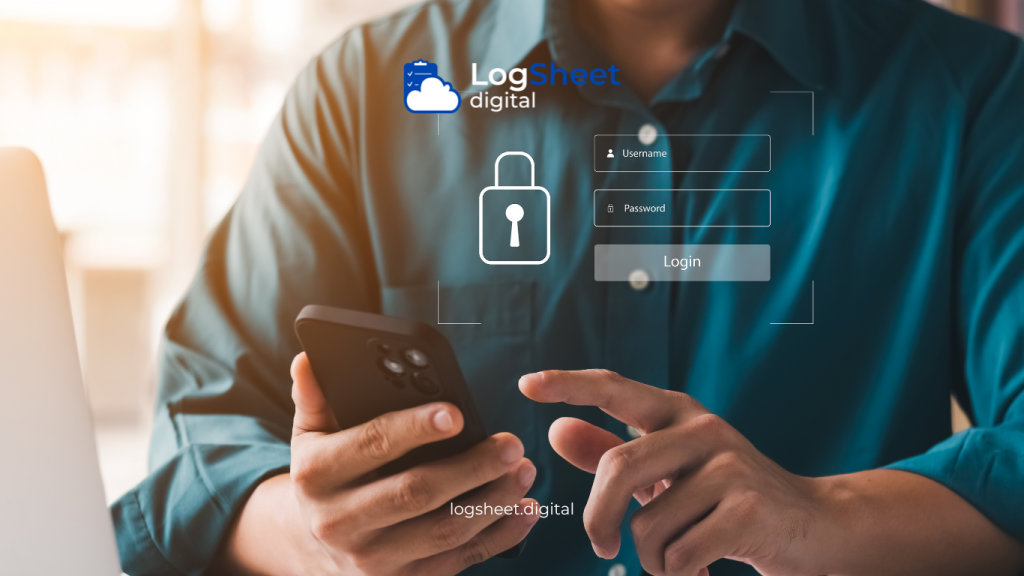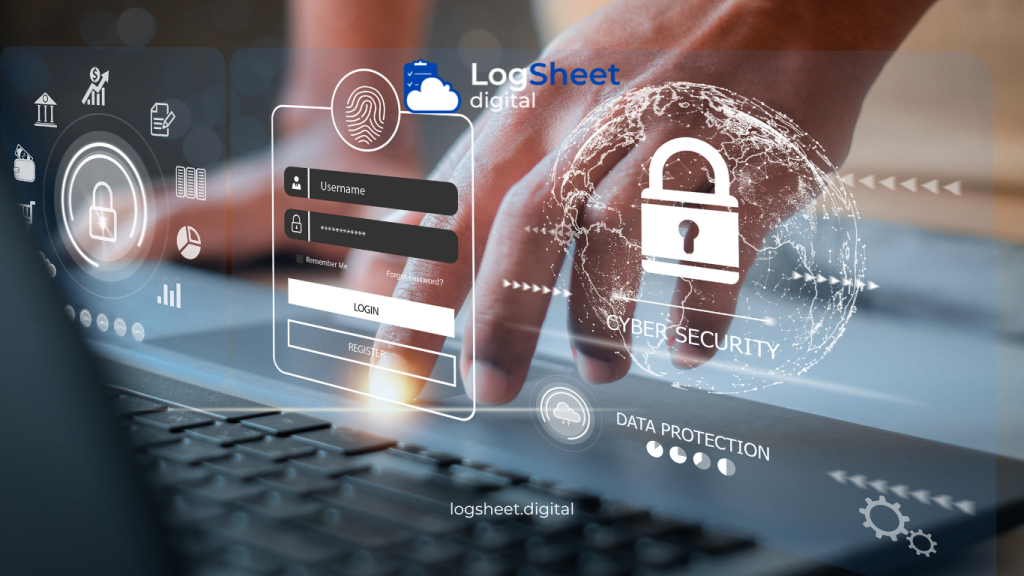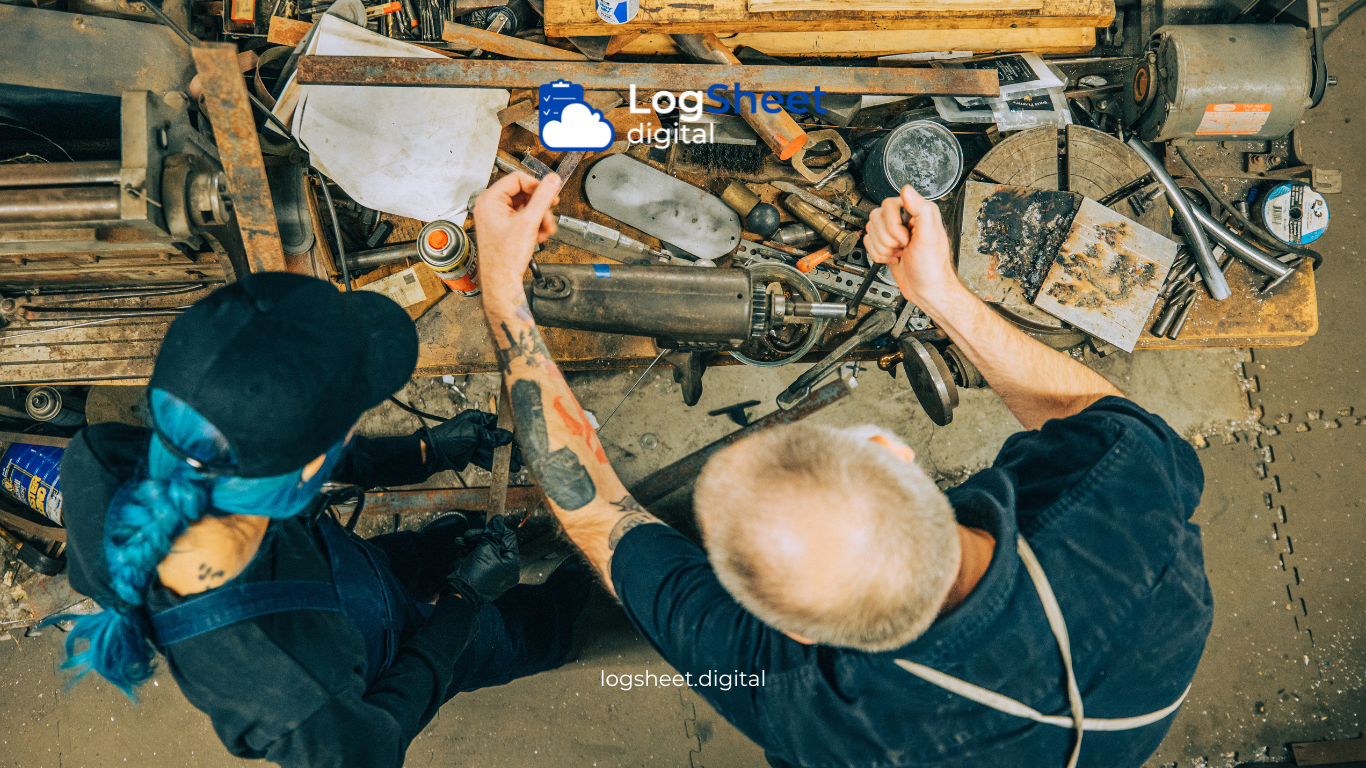\
\In today’s digital era, the use of digital logsheets has become a crucial necessity in various industries. Digital logsheets allow for more efficient, accurate, and easily accessible data recording compared to traditional paper-based logsheets. However, along with these advantages, there are also significant challenges related to data security. This article will discuss the data security challenges in digital logsheets and the strategies that can be used to address these issues.
What Is a Digital Logsheet?

Read more: Digital Logsheet: A New Innovation in Industrial Monitoring and Maintenance
A digital logsheet is an electronic recording system that replaces traditional paper logsheets. This system is used to record various operational data, such as daily activities, equipment maintenance, and safety inspections. Digital logsheets can be accessed via electronic devices such as computers, tablets, or smartphones, allowing for ease of access and real-time data management.
Data Security Challenges in Digital Logsheets

Read more: Improving Industrial Safety through Digital Logsheets for Safety Equipment
1. Cyber Threats
Cyber threats are a major challenge in the security of digital logsheets. Hackers may attempt to steal or damage critical data through malware, phishing, or ransomware attacks. This vulnerability becomes more significant if digital logsheets are accessed via unsecured internet networks.
2. Human Error
Human error, such as using weak passwords or inadvertently sharing access credentials, can open the door to security breaches. A lack of awareness and training on cybersecurity best practices also exacerbates this risk.
3. Data Integrity
Maintaining data integrity in digital logsheets is another challenge. Corrupted or unauthorized modifications to data can cause significant losses, especially if the data is used for operational decisions or regulatory compliance.
4. Unauthorized Access
Weak access controls can result in unauthorized access to digital logsheets. This can occur if devices are not adequately protected or if access credentials fall into the wrong hands.
Data Security Strategies in Digital Logsheets

Read more: Digital Transformation in Maintenance Management: The Role of Digital Logsheets
1. Using Encryption
Data encryption is a crucial step in protecting data within digital logsheets. By encrypting data, the information will remain secure even if it falls into the wrong hands, as only those with the encryption key can access it.
2. Two-Factor Authentication (2FA)
Implementing two-factor authentication (2FA) can add an extra layer of security. In addition to using passwords, users must also enter a verification code sent to their device, reducing the risk of unauthorized access.
3. Cybersecurity Training
Training and educating all employees about cybersecurity is essential. By understanding risks and best practices, employees can reduce the likelihood of human errors that could compromise data security.
4. Security Updates and Patches
Ensuring that digital logsheet software is always updated with the latest security patches is crucial for protection against new threats. Software developers often release updates to fix discovered security vulnerabilities.
5. Role-Based Access Control
Implementing role-based access control (RBAC) allows organizations to restrict access to digital logsheets based on employees’ roles and responsibilities. Only authorized users can access or modify specific data.
6. Monitoring and Log Audits
Real-time monitoring of activities within digital logsheets and regular log audits can help detect suspicious activities or security breaches. This allows taking preventive measures before larger losses occur.
Case Studies: Success in Data Security Strategies

Read more: Operational Efficiency: Implementing Digital Logsheets
1. Manufacturing Company
A large manufacturing company implemented a digital logsheet system to record machine maintenance activities. After experiencing several security breaches, the company adopted data encryption and two-factor authentication. Additionally, they conducted cybersecurity training for all employees. As a result, the company successfully reduced security breaches and increased confidence in data management.
2. Hospital
A hospital uses digital logsheets to record patient information and medical activities. To protect sensitive data, the hospital implemented role-based access control and log monitoring. They also keep the software updated with the latest security patches. These measures help the hospital maintain the confidentiality and integrity of patient data.
Conclusion

Read more: Digital Logsheet: Revolutionizing the Monitoring and Maintenance of Safety Equipment
Data security in digital logsheets is a crucial aspect that every organization must pay attention to. Cyber threats, human error, data integrity issues, and unauthorized access are significant challenges that organizations must address. By adopting security strategies such as data encryption, two-factor authentication, cybersecurity training, software updates, role-based access control, and log monitoring, organizations can protect their data more effectively. Case studies from a manufacturing company and a hospital show that implementing the right security strategies can result in better data protection and reduced risk of security breaches.
With the right measures, digital logsheets can become a very useful and secure tool in operational data management, helping organizations stay efficient and safe in this digital era.






comments (0)